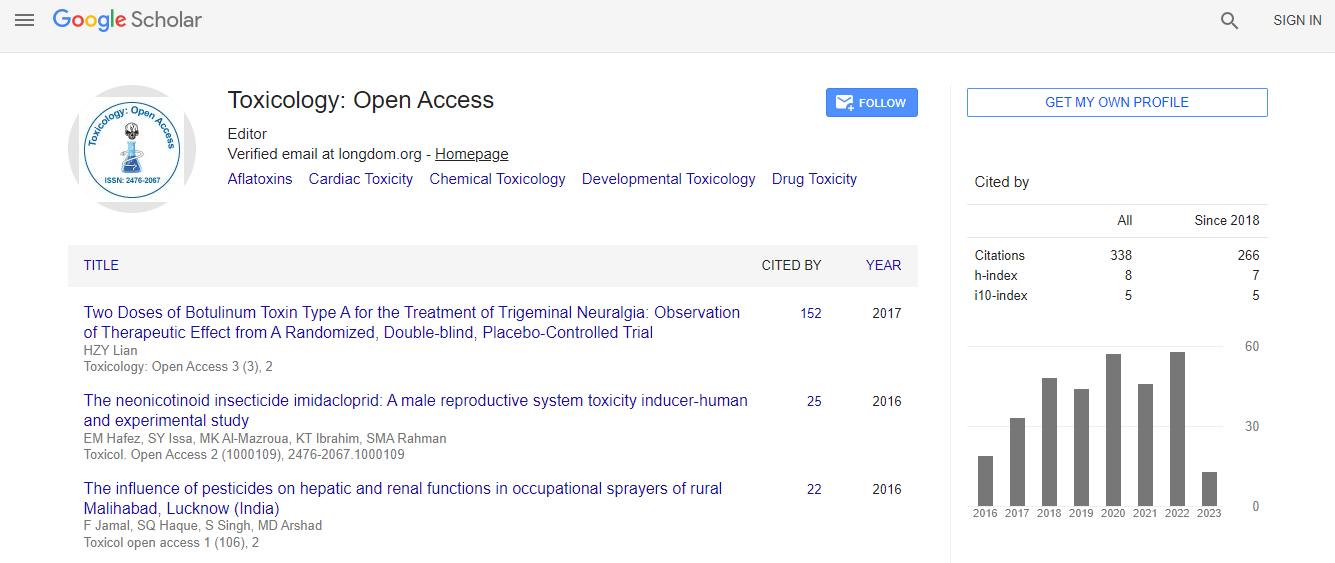Review Article
Research on Nanotoxicity of an Iron Oxide Nanoparticles and Potential Application
Ling Zhang, Hongmei Xie, Yingxun Liu and Jinke Wang*
1School of Biomedical Engineering, Hubei University of Science and Technology, Xianning 437000, China
2State key Laboratory of Bioelectronics, Southeast University, Nanjing 210096, China
- *Corresponding Author:
- Jinke Wang
State key Laboratory of Bioelectronics
Southeast University, Nanjing 210096, China
E-mail: wangjinke@seu.edu.cn
Received Date: July 17, 2017; Accepted Date: August 28, 2017; Published Date: September 01, 2017
Citation: Zhang L, Xie H, Liu Y, Wang J (2017) Research on Nanotoxicity of an Iron Oxide Nanoparticles and Potential Application. Toxicol Open Access 3:130. doi: 10.4172/2476-2067.1000130
Copyright: © 2017 Zhang L, et al. This is an open-access article distributed under the terms of the creative commons attribution license, which permits unrestricted use, distribution, and reproduction in any medium, provided the original author and source are credited.
Abstract
The iron oxide nanoparticles (FeNPs) are widely used in biomedicine for good biocompatibility. To promote its safe application, any potential nanotoxicity should be thoroughly and carefully investigated. This paper systematically summarizes our lab’s research on the nanotoxicity of iron oxide nanoparticles coated with dimercaptosuccinic acid (DMSA), including the effects of FeNPs on viability, apoptosis, cycle, and oxidative stress at cell level. In vitro studies revealed that the FeNPs showed obvious apoptosis of human acute monocyte cells (THP-1) and human hepatoma cells (HepG2) at the highest concentration. FeNPs resulted in common and cell typespecific nanotoxicities of the FeNPs to both human and mouse cells at the gene, disturbed cell’s iron and osmosis homeostasis by the internalization of FeNPs through releasing iron ion in cells, resulted in cytotoxicity of DMSA as coating molecules of FeNPs and the inhibitor of DNA binding/differentiation (Id) related nanotoxicity of FeNPs at gene level. The studies of our lab shed many new insights into the nanotoxicity of the nanoparticle. Furthermore, the toxicity may play more value if it is guided and applied reasonably, such as iron supplement, anti-oxidation, and immunotherapy.

 Spanish
Spanish  Chinese
Chinese  Russian
Russian  German
German  French
French  Japanese
Japanese  Portuguese
Portuguese  Hindi
Hindi 